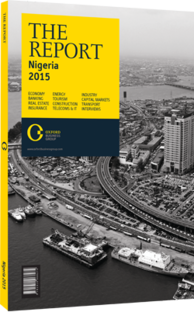The government launches new efforts to boost access to mortgages for the middle class
Despite a housing gap estimated at 17m units, the provision of affordable long-term financing has remained virtually non-existent. By 2013 there were a mere 20,000 mortgages outstanding, according to the Ministry of Finance (MoF), at best-case interest rates of 19% over 10 years. In parallel to government efforts to promote the construction of more affordable housing, authorities are radically restructuring the housing finance segment. Having raised the capital requirements for primary mortgage institutions (PMIs), the Central Bank of Nigeria (CBN) is supporting government efforts to create a mortgage refinancing mechanism to tap long-term funding from capital markets with a focus on lower rates and longer maturities on mass-market mortgages.
Limited Reach
The current reach of mortgages is marginal, both as a share of the economy and by number of borrowers. Outstanding mortgages accounted for just N224bn ($1.4bn) in 2013, or 0.3% of rebased GDP. This is far lower than the 2% in Botswana, 6% in India or 31% in South Africa, per World Bank figures.
The terms of these mortgages are equally prohibitive. Loans are usually capped at 70-75% of a unit’s value, while interest is in the 22-30% range for middle-class borrowers. None extend past a 10-year maturity. Fidelity Bank puts the average mortgage value in Lagos at N40m-70m ($244,000-427,000), out of reach for most.
Lenders
A 1989 decree opened up the mortgage space to private lenders, alongside the Federal Mortgage Bank of Nigeria (FMBN). By 2011 the CBN had licensed over 100 PMIs. That same year the CBN issued new regulations raising PMIs’ capital requirements from N100m ($610,000) to N2.5bn ($15.3m) for those limited to one state and to N5bn ($30.5m) for nationwide licences. Some 82 lenders applied for the new licences, with 40 approved within three months of the deadline, including seven national PMIs and 33 state-level lenders. The higher requirements prompted some consolidation, with most banks selling their mortgage subsidiaries.
Yet the larger size of the PMIs was in itself insufficient to significantly lower their cost of funding or catalyse the $300bn needed over 30 years to bridge the housing gap. “The hike in mortgage lenders’ capital requirements to N5bn ($30.5m) has considerably reduced their activity in 2013, as most of them faced the fund raising and recapitalisation exercise, leading to mergers and acquisitions by some of them,” Ahmed Tunde Popoola, managing director of CRC, told OBG.
Refinancing Vehicle
As part of its housing finance programme, the MoF aims to create a pool of long-term capital at low rates through a mortgage refinancing vehicle, the Nigerian Mortgage Refinance Company (NMRC). Launched in January 2014, NMRC aims to increase outstanding mortgages tenfold to 200,000 by 2019, while also bringing prevailing interest rates down into the single digits and maturities up to 15-20 years. The 14-state pilot programme, expected to see an initial 10,000 government-guaranteed mortgages granted to low- and middle-income earners, was greatly oversubscribed, receiving 66,402 applications in just 33 days.
Finding Funds
The NMRC raised N6.75bn ($41.2m) in equity from 19 institutions, and commitments for an additional N2bn ($12.2m). It also draws statutory contributions from workers, at 2.5% of salaries. Through the World Bank’s International Development Association, the firm raised another $300m in 40-year concessional loans at 0.75% in early 2014 – of which $250m will be injected in instalments as Tier-2 capital, $25m as a guarantee facility for low-income clients and another $25m to develop housing microfinance products. The NMRC plans to raise more funds to refinance mortgages on lenders’ books, signing a memorandum of understanding with US investment firm Cantor Fitzgerald in March 2015 for $1bn in funding for new mortgages.
These ambitious plans will require significant reforms, from improving land availability to enhancing the capacity of developers and reducing transfer costs that can reach 15-20% of a property’s value in Lagos State (see Real Estate chapter). Yet sanitising the mortgage segment and boosting access to long-term funding are key steps to shore up effective demand for new housing.
You have reached the limit of premium articles you can view for free.
Choose from the options below to purchase print or digital editions of our Reports. You can also purchase a website subscription giving you unlimited access to all of our Reports online for 12 months.
If you have already purchased this Report or have a website subscription, please login to continue.

